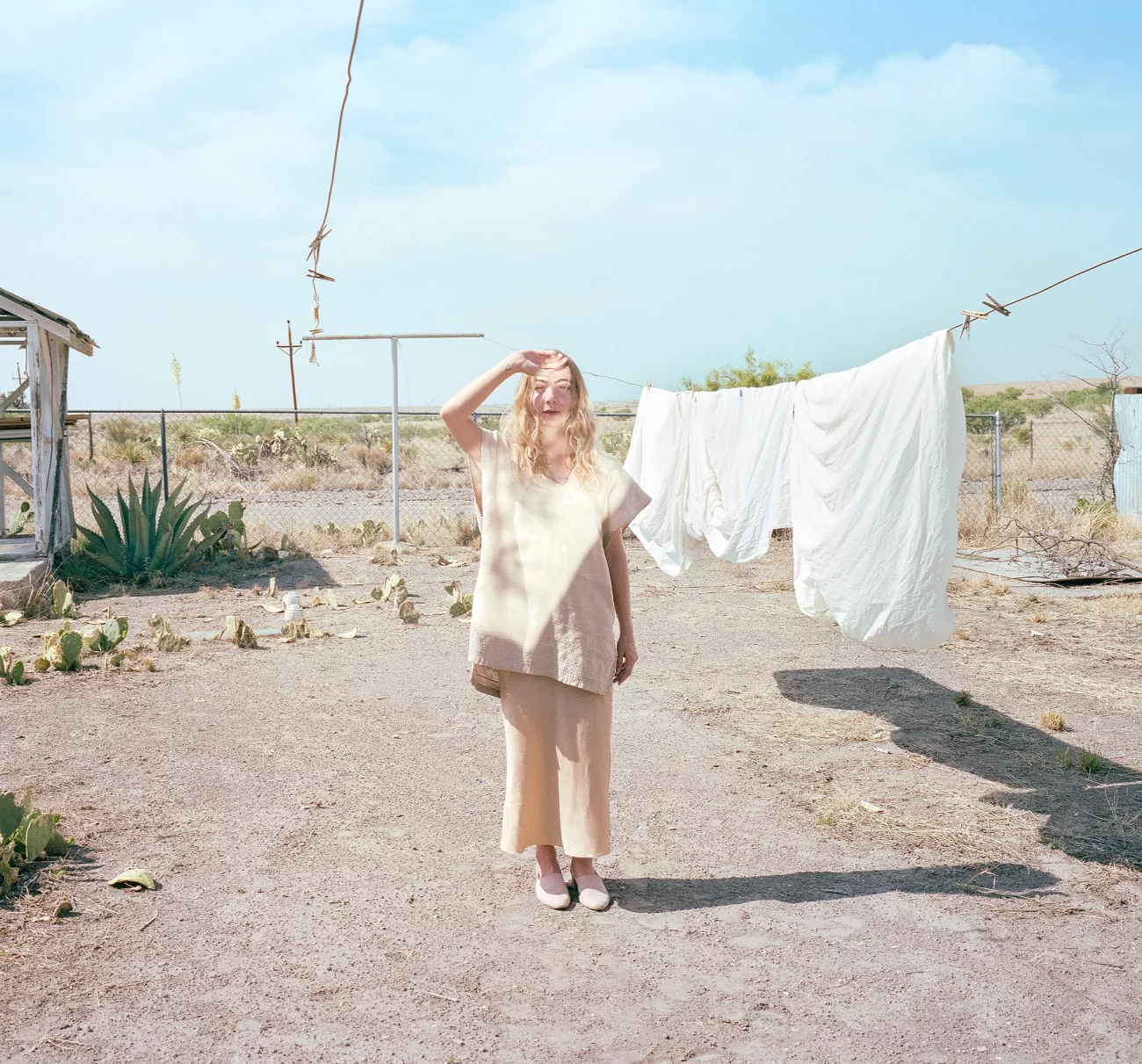Textile artist, Elizabeth Hohimer lives and works in Marfa, Texas. The California College of the Arts graduate sat down and spoke with us about her work, her weaving and textile process and living in Far West Texas. (Image: Elizabeth Hohimer in Marfa, photographed by Ada Smith. Courtesy of the artist.)
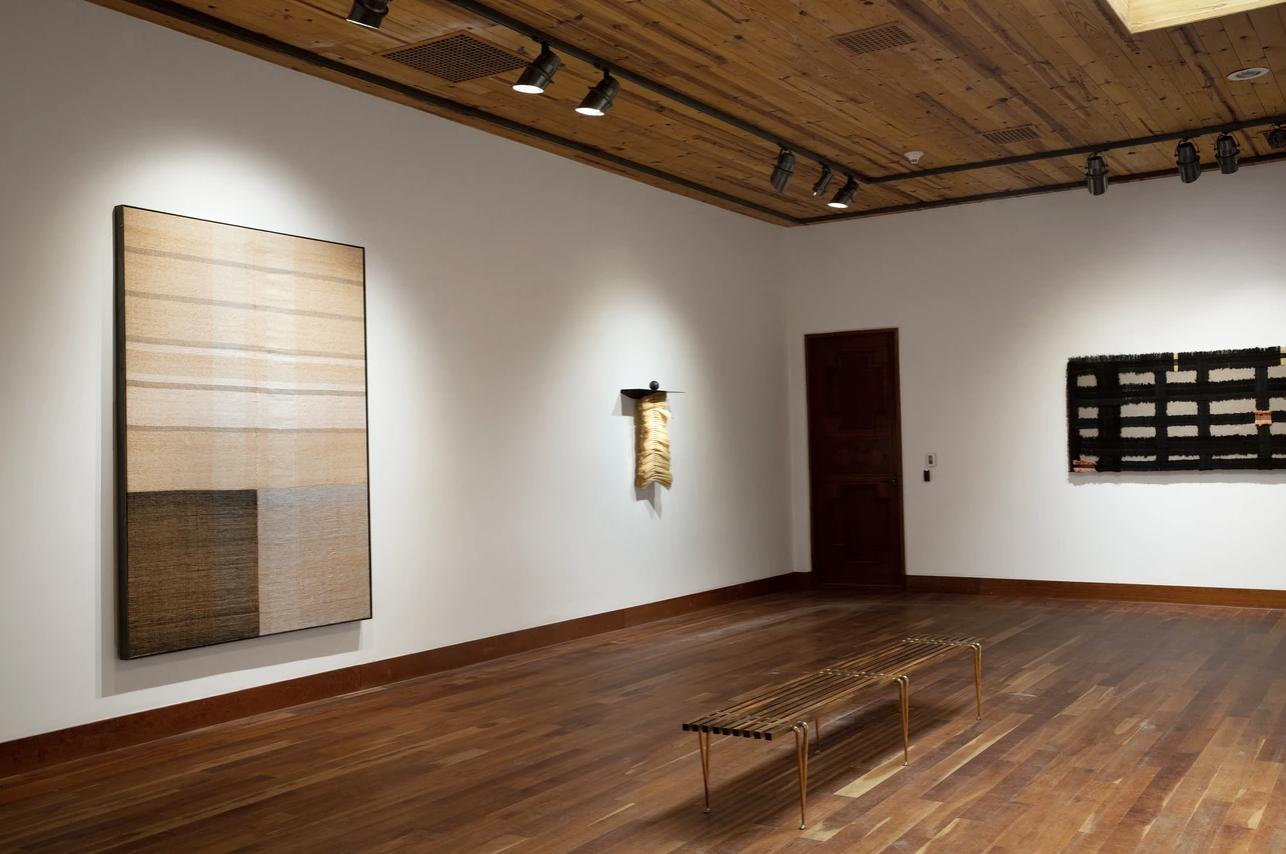
Elizabeth’s 2020 exhibition Cessation at Gerald Peters Contemporary, Santa Fe, NM featuring two works now in the Tia Collection; Notation (far left) and Interior (far right).
TC: What first drew you to textiles?
EH: My Nana made many of my favorite dresses when I was little, instilling in me the notion of the hand of the maker being a part of an object. Nana’s patchwork quilts, Granny’s hand crochet throws, synthetics and organic materials in textiles were a huge part of my sense of comfort growing up, as well as now. The first time I saw a weaver was at a ‘pioneer day’ in elementary school where I saw the turquoise ring covered fingers of a silver haired magical woman and I knew she had some secret I wanted in on. I also knew I needed to study the jacquard loom under Josh Faught and I am so lucky I dove into that desire without much of an explanation.
TC: Who is Josh Faught?
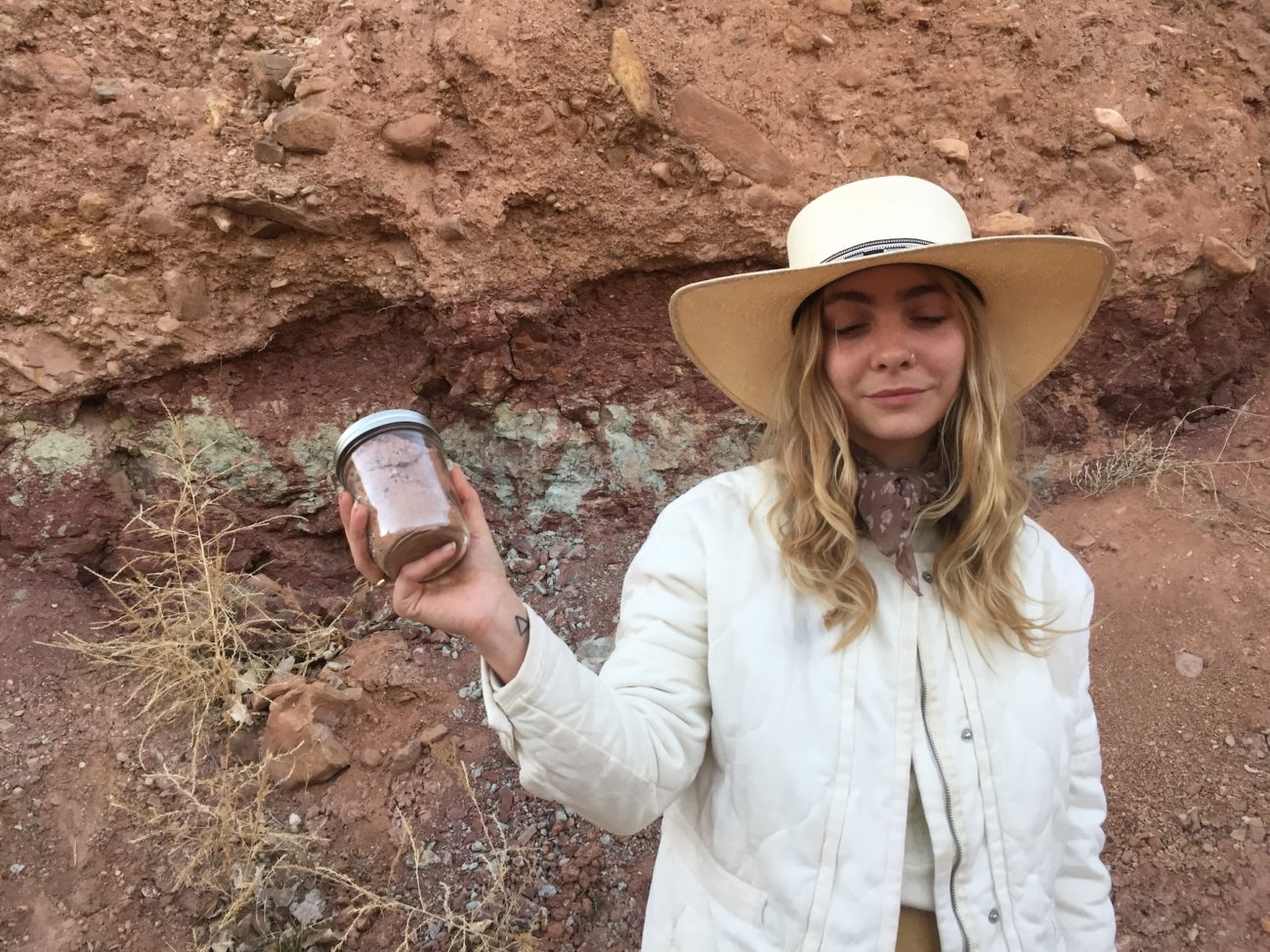
TC: You collect clay to dye your fabric. How did you learn about this process?
EH: Dyeing the yarn I use with found clays is a choice that came up naturally rather than through a book or class. Where I grew up in Texas, the dirt is deep red with iron oxide, so I was always told, ‘go put your play clothes on before you get red dirt on you.’ Staining the yarn with clays before I weave allows the origin of inspiration – the land – to be a part of the fully realized feeling presented in the form of woven paintings.
TC: Why is it important to you to use undulating twill rather than pre-dyed fabric?
EH: When weaving, I draft work in double cloth structures, in undulating twills (or others), and use painted warp techniques to convey my message through my hands. A piece of dyed fabric does not have the same aura of a hand woven textile.
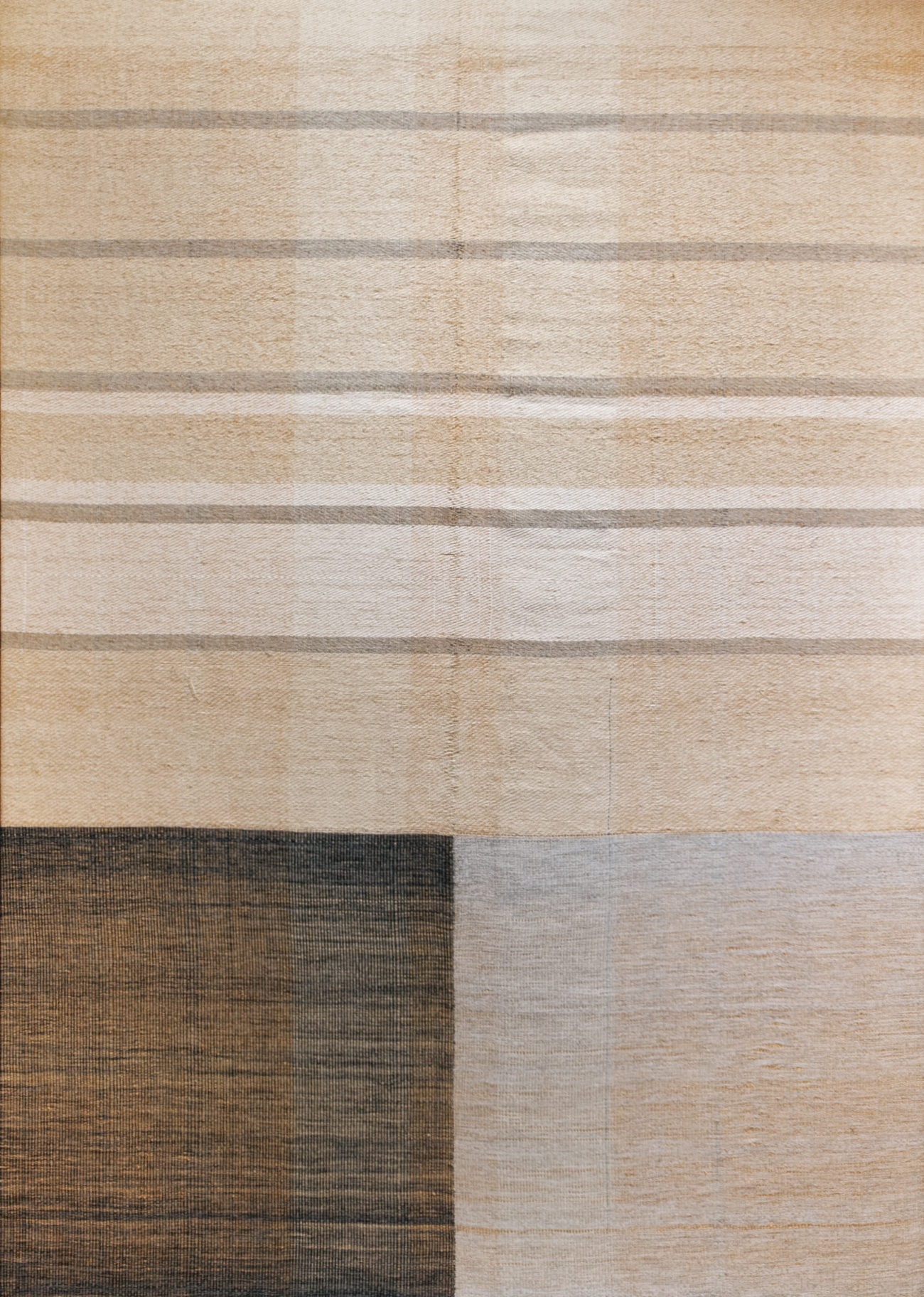
Elizabeth Hohimer, Notation, 2020. Handwoven double pine paper yarn and cloth stretched over canvas in steel frame. Tia Collection, Santa Fe, NM.
TC: You live and work in Marfa and much of your work relates to this high desert landscape. What made you choose this part of Texas as your new home?
EH: I grew up coming to West Texas with my daddy and then continued to frequent this area when I was based in California, making consistent long road trips that would snake through the southwest region of the states. Marfa provided me a place to put in the time and find space to make the work I now make. The high desert sounds, the horizon line hugging you and the smell of summer monsoon rain are all why I live here and why I make work.
TC: Is there something that people can learn from living in a desert landscape? Or is there something you have learned from living in the high desert?
EH: This desert of Far West Texas brings up things that you may have been avoiding. Solitude is rewarding when you learn how to use it and the desert does so much to teach you that. The landscape shifts dramatically from the border, to Marfa (the plateau) and north through the high desert of the Davis Mountains. I have learned so much about myself since moving to Far West Texas.
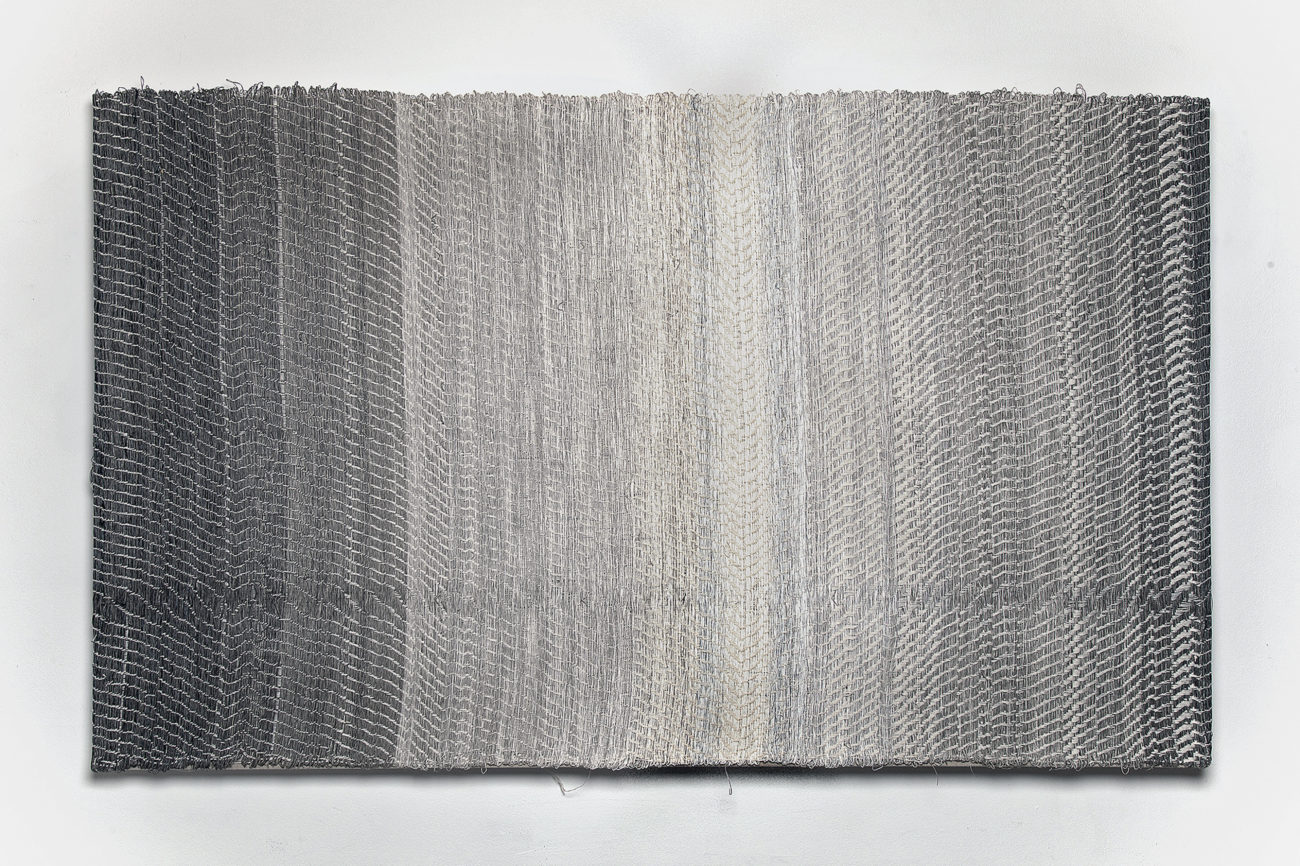
Elizabeth Hohimer, Two Mountains, When Lovers Lay Down, 2019. Handwoven pine paper yarn stained with piñon ash, black mud, and tannic acid stretched over linen. Tia Collection, Santa Fe, NM.
TC: Many bios describe your work as a meditative process, do you believe this to be true and that it adds to your work?
EH: There is a very consistent rhythmic, meditative flow that is intrinsically part of the act of weaving. I see the time that I spend winding warp to weaving as time to process feelings harnessed prior to planning the woven painting. The time I spend weaving is a critical part of the way I distill life.
TC: Do you find it hard to separate from your works when they are completed, especially after you connect so deeply during the process of making them?
EH: When a piece sells, my first words are usually ‘Thank you so much for finding this piece a home!’ I have never considered it difficult to let a piece leave my studio since it is just part of the process that allows me to keep making and living in the way I must to create the work I make. Are there works I wish I had kept – yes!
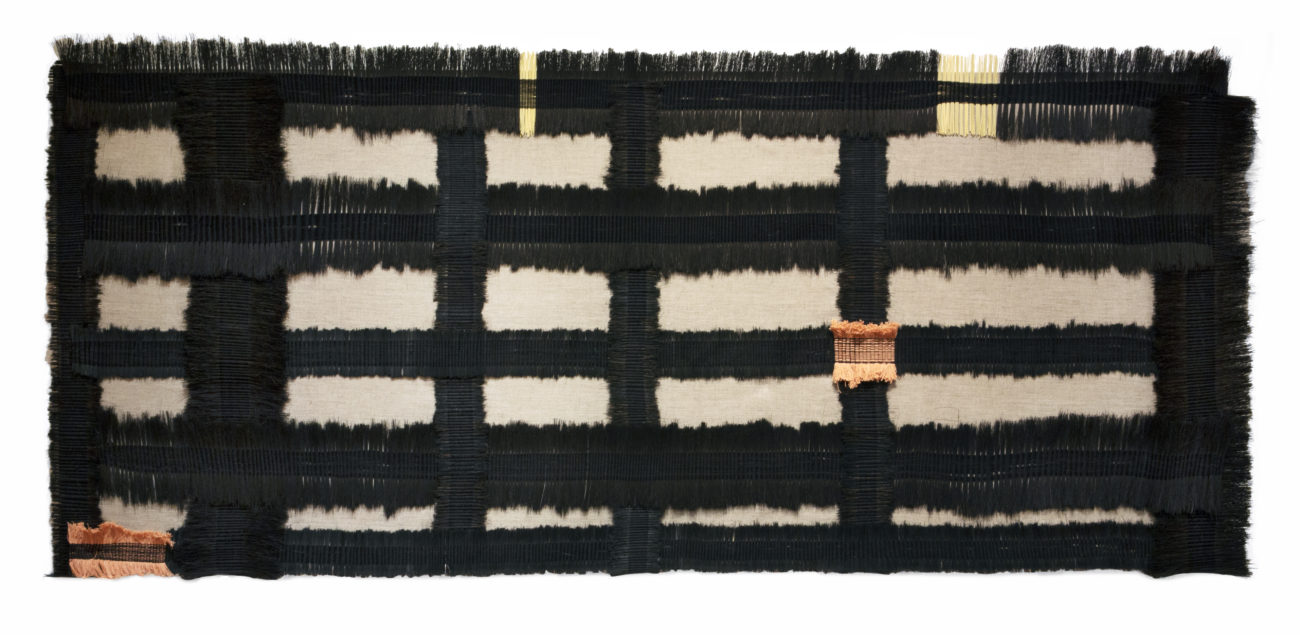
Elizabeth Hohimer, Interior, 2020. Handwoven cactus fiber and cotton panels stretched over linen. Tia Collection, Santa Fe, NM.
TC: Are there other forms of media that you hope to explore?
EH: In December, 2020, I made a series of monotypes at Hand Graphics in Santa Fe. I love the way these came about and am eager to make more. One of the pieces in your collection, Interior, is made by stitching multiple bands of woven pieces together. This was the first work in which I sewed separate weavings together to create the image. The bands used in this piece are made of tampico fiber which comes from the agave plant.
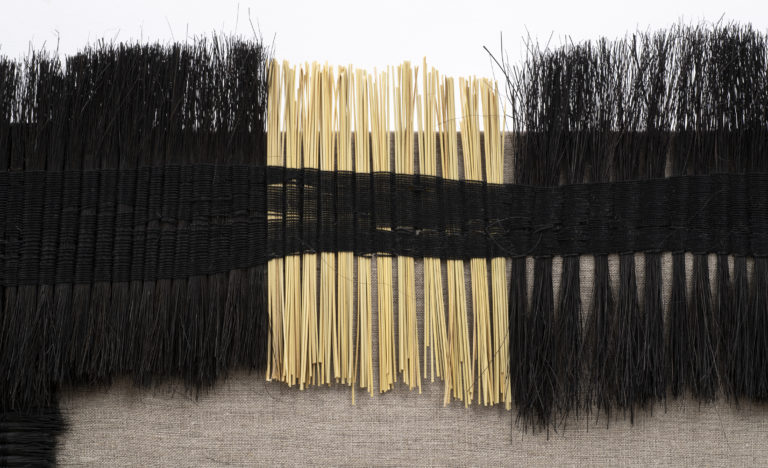
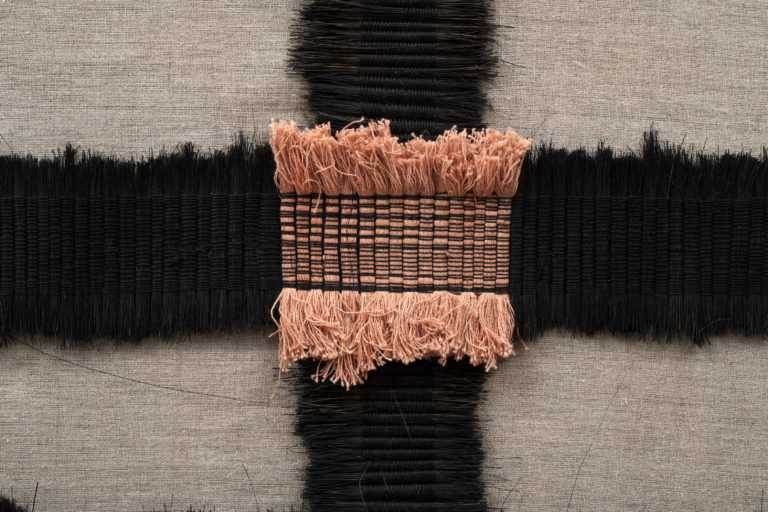
Written and designed by Sarah Greenwood.

